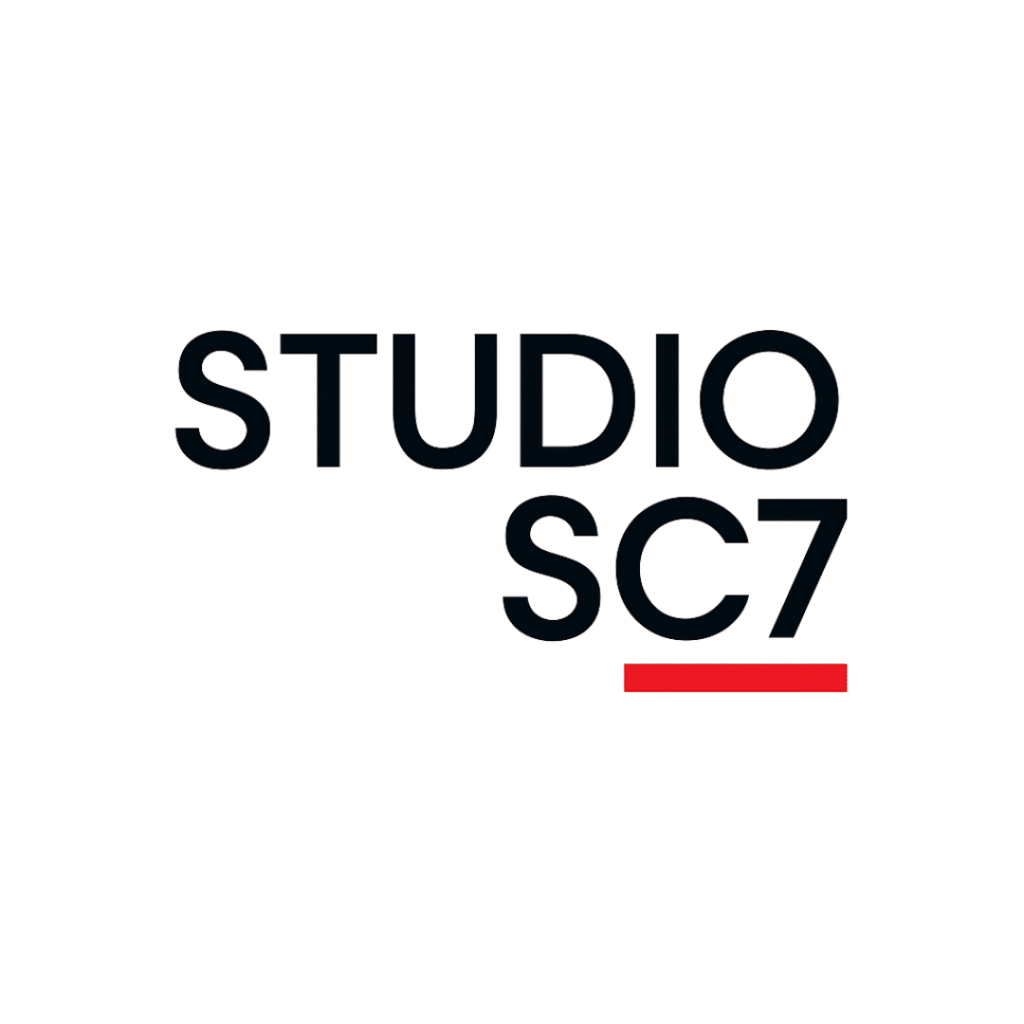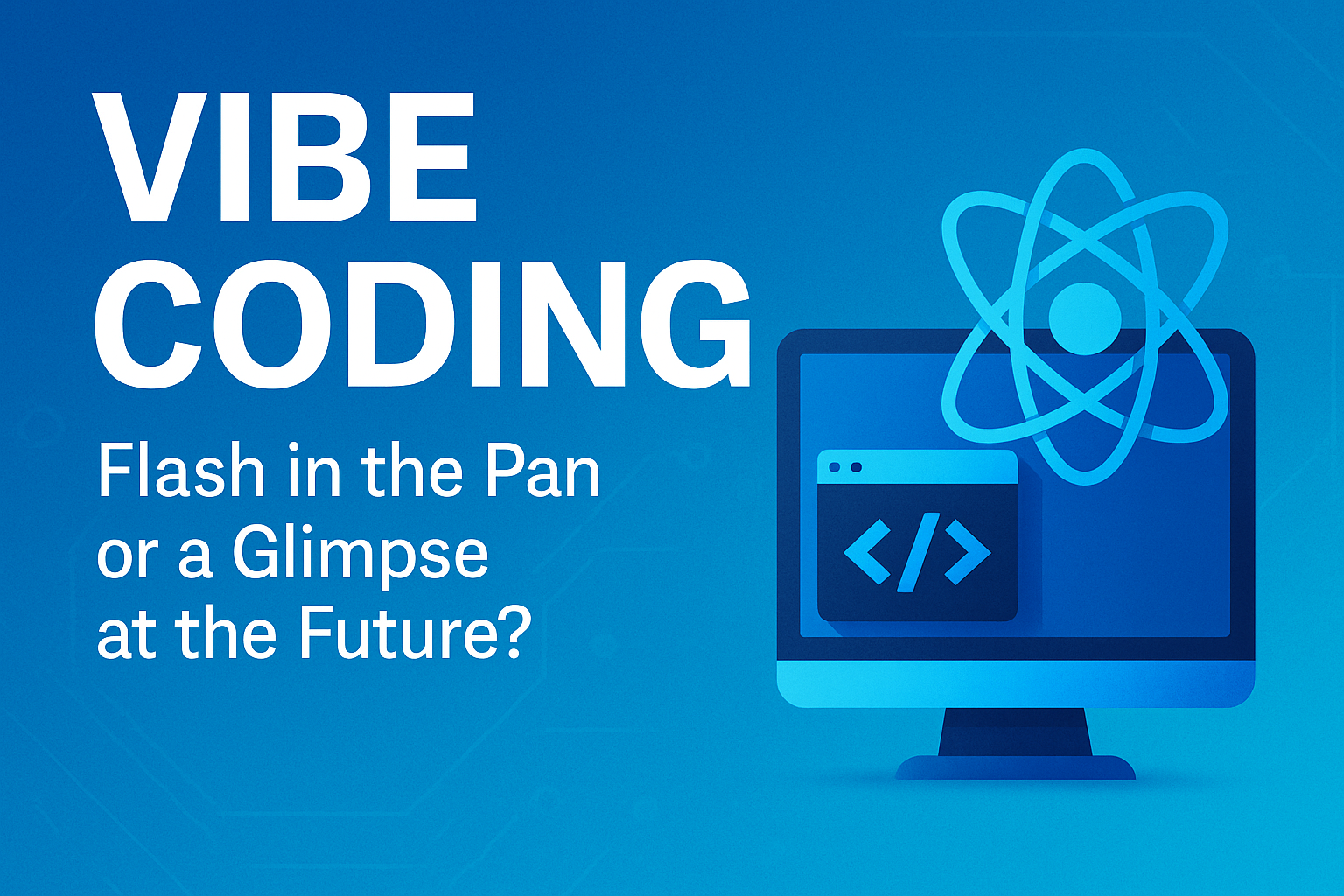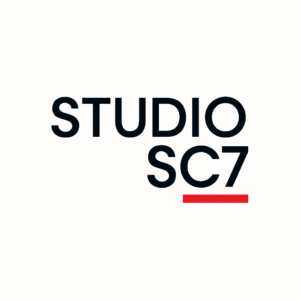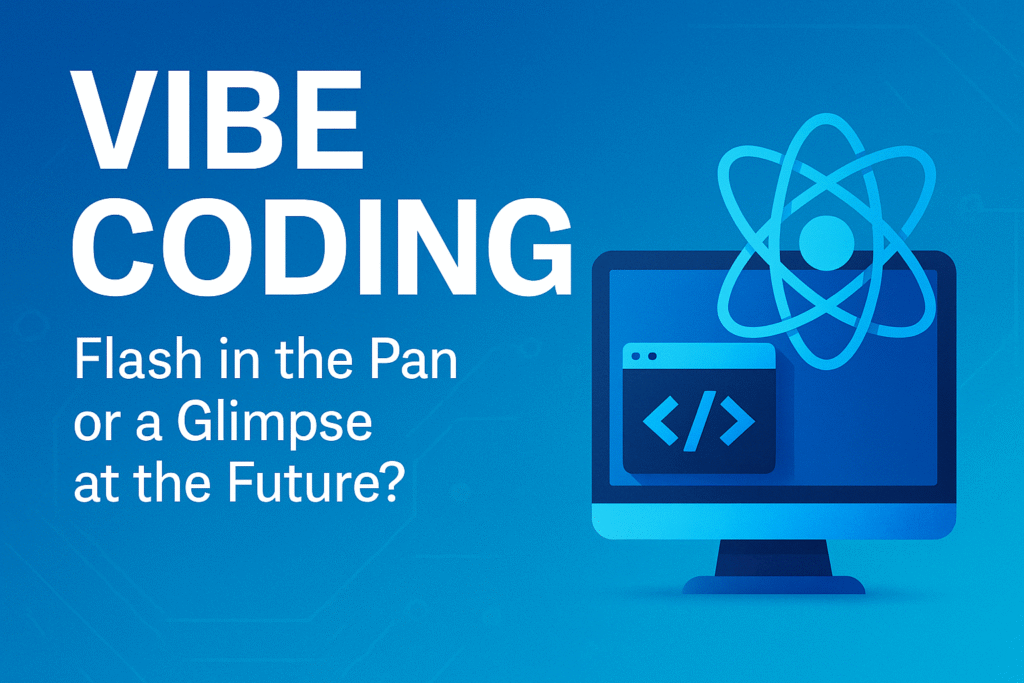Vibe coding is a phrase that started showing up in early 2025. It was coined by Andrej Karpathy, who described it as a way of working with AI to build software quickly and intuitively. His explanation was simple: “I just see stuff, say stuff, run stuff, and copy paste stuff, and it mostly works.”
It is not a method or a framework. It is a reflection of what happens when you combine a capable language model with someone who knows roughly what they want to build and is comfortable figuring it out in motion.
What vibe coding actually is
Vibe coding is about working with AI tools in a way that prioritises progress over planning. You describe a function or outcome, the AI generates code, and you iterate from there. Sometimes you paste it straight in and try it. Sometimes you ask for a cleaner version or a change in approach. You are not obsessing over the architecture. You are just trying to move the idea forward.
This is not a replacement for traditional software development, and it is not a shortcut to production-ready systems. But it is becoming a useful layer in the product development process, especially at the early stage where speed, experimentation, and learning matter more than polish.
Why it matters
Most software is still written the traditional way. That will not change overnight. But AI tools like GPT-4o, Replit’s Ghostwriter, and tools inside IDEs are getting better at helping people translate intent into functioning code. Personally I have been using Cursor with OpenAI to start creating some custom WordPress plugins for projects with user stories and roadmaps. With success.
The shift here is not just technical. It is practical. Vibe coding lowers the cost of testing an idea. It makes it easier to experiment. It gives people who are not full-time developers, but who understand problems well a way to build solutions quickly and test them in the real world.
We are seeing it already in early-stage startups and internal tools. Some YC founders are using AI to generate the bulk of their code. Some large companies are hiring for this skill specifically. That tells you it is not just noise — it is quietly becoming useful.
What this means for builders
For people who think deeply about problems and like to create, this shift is a positive one. You do not need to wait for a developer to try something out. You do not need to hand off a spec and hope it comes back in two weeks as intended.
You can build the first version yourself. It might not be perfect, but it is real. And that lets you move faster, learn faster, and make better decisions about what is worth scaling.
This will not appeal to everyone. Some teams will ignore it. Others will treat it as a toy. But the ones who take it seriously, who integrate it into their workflows in a thoughtful way – will move quicker and build smarter.
Looking ahead
Vibe coding is not a silver bullet. It has limits. AI-generated code still needs review. It still needs context. It still breaks.
But its value is clear. It creates space for productive thinkers to become builders. And it nudges product development away from handoffs and towards hands-on creation.
As the tools improve, this approach will become more common – not just for developers, but for product owners, founders, and domain experts who want to build things themselves.
This is not a replacement for good engineering. It is just a new way to start.






